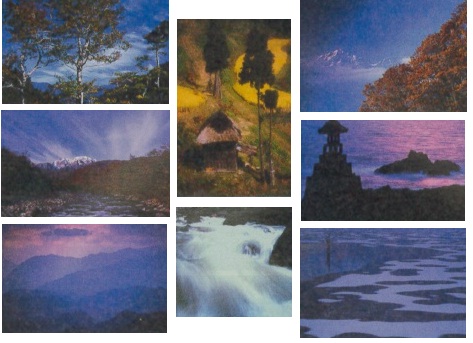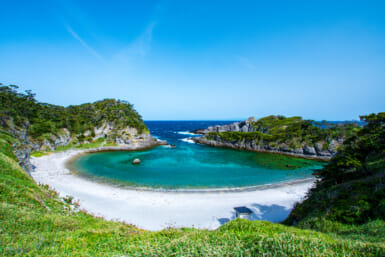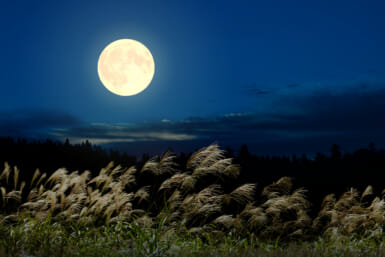Story by Nathan Porter
Photos by Christopher Domitter
“The view, as one looks straight down into the wild and desolate valleys that stretch away from the base of the mountain, is most impressive. To the north lie the almost unknown peaks of the range between the provinces of Shinshu and Etchu. On the west stands the rugged form of Kasadake, which we think would form a grand climb from the valley which separates it from us. Southwards, the eye rests on the nearer giants of this group, Hodakayama, and the massive double-topped Norikura, and beyond these Ontake. To the southeast, but further off, stands the grand mass of mountains on the borders of Shinshu and Doshu… But most striking of all is the stately cone of Fuji rising with its majestic sweep… at a distance, as the crow flies, of over 85 miles. To enumerate all the summits to be seen from the point on which we stand, would be to give a list of all the grandest mountains in Japan.”
—Walter Weston
(Written more than 100 years ago by the British climber who coined the phrase “The Japan Alps”)
These same mountains that the famous mountain-climbing pioneer so eloquently described still attract thousands of outdoor enthusiasts every year. The heart of the Japanese Alps—Shinshu—is what we now call Nagano Prefecture. And today that stately cone with its majestic sweep is this country’s most famous symbol and the most-climbed mountain in the entire world. Would Weston believe that you could now mail a letter back to jolly old England from the post office atop Mt. Fuji? Probably not.
But when people from abroad think about Japan, rarely do outdoor pursuits such as hiking and camping come to mind either. The fact is that Japan is blessed with an abundance of natural beauty and outdoor activities for those who love the great outdoors and are willing to go out and find it. The excellent transportation network means that even the relatively remote areas are easy to get to.
In a country of more than 120 million people, there is no shortage of nature lovers. Even today, when most people in Japan go in search of nature, camping and hiking, the Japan Alps and the Mt. Fuji area are the first place they go. Nagano and northern Gifu still inspire thoughts of clean air and cool high-mountain retreats. Hakuba, Shiga Kogen, Kamikochi and Hida-Takayama are among the most popular and beautiful outdoor areas and offer year-round opportunities for adventure seekers, or those just looking to get out of the urban sprawl. Mt. Fuji, of course, welcomes hordes of climbers determined to conquer the most famous natural treasure even if it means standing in line to do so.
There are, however, alternatives. Places that may not be quite as well known, but that offer great natural beauty and the opportunity to have unforgettable outdoor experiences. Camping can be a cheap and easy get-away in a country famous for its high-priced hotels and entertainment. Campgrounds in Japan can vary from simple campsites to those with cabins, tennis courts and other modern facilities. So it’s a good idea to find out as much as you can before you go.
One area often overlooked is the Hokuriku Region in central Japan. It offers some of the most diverse and interesting outdoor areas and is full of campgrounds and outdoor activities. With a bullet train heading directly to Niigata City from Tokyo, it’s also easily accessible.
Camping in Exile
Niigata Prefecture is located in northwest Honshu, along the Sea of Japan. Its long coastline and seaside beaches feature numerous hot springs, camping areas and are a great place to enjoy marine sports—or just bask in the sun. Niigata also is home to one of Japan’s most special places—Sado Island.
Sado is Japan’s fifth-largest island. Its rugged coastlines, mountainous interior, pleasant beaches and unique history and culture make it a great place to get away. It was once an island prison where many of Japan’s most famous dissidents, criminals and revolutionary figures were exiled to spend their final days. Today it is a peaceful island and the home of the internationally acclaimed taiko group Kodo. There are many interesting places worth visiting and various activities such as biking, hiking, camping and scuba diving.
Although there are also ferries available to Ogi and Akadomari, Ryotsu is the main port and close to both the sea and the mountains. Near Ryotsu, Lake Kamo-ko was once a fresh water lake (until a canal was built linking it to the sea). On the eastern shore, Suwa Park provides great views of the interior such as Mt. Donden, and within the park you can visit Shiizaki Onsen. Camping is available nearby.
On the other end of the island, just over the hill from the port town of Ogi, is Sobama Beach. Visitors can camp on the large white beach or rent one of the bungalows. This is the main camping area during Kodo’s Earth Celebration in mid-August, so if you’re looking for peace and quiet, it’s probably not the right time to go.
The Futatsugame Coast (two turtles) derives its name from its resemblance to two turtles sitting side by side. Because the coastal water is clearer here than any other spot around Sado, Futatsugame has become a very popular swimming and camping site. If you have time to explore Sado, you’ll undoubtedly find countless wonderful places along the way.
There are also other great camping areas including the new Hajikino Field Park that has log houses, auto-camp sites, a swimming pool and more.
Exploring Noto
The Noto Peninsula in Ishikawa Prefecture is known for its varied and spectacular scenery. The side facing the Japan Sea is rough and wind-beaten, while the other is protected, smooth and tranquil. There are some wonderful places to camp along the coasdines and it is also a popular area for cyclists and outdoor enthusiasts.
To the west of the harbor lies Kamogaura Point. Eroded by the sea, an interesting white rock formation extends 400 meters east to west, and 150 meters north to south. It’s a popular tourist area in summer for hiking, camping and fishing. Past Kamogaura, the road passes through the Konoha Tunnel and comes out on a quiet inlet with an excellent beach. The Sodegahama Beach area is the focus for the International Exchange Village and the campground has cooking and toilet facilities. Few tour buses can travel the narrow road from Kamogaura to Sodegahama, making this route one of the best-kept secrets. The scenery consists of a tunnel of keyaki trees, unusual rock formations as well as the Akasaki Nature Trail.
The Sosogi Coastline on the northwest tip of the peninsula offers some of the most interesting areas for visitors. Iwakura-yama (357 meters) rises steeply from the coast. If you hike up the nature trail, you will see 1,000 weather-beaten jizo, or guardian deities of children and travelers. The Hachigasaki Resort is a park equipped with cabins and outdoor cooking facilities, along with a good swimming beach and clear water.
Six cottages are available for rent by reservation. Mitsukejima is situated just off the coast of Mitsuke Beach. It is known for its massive rock formation that juts out from its calm water. Resembling a battleship, it is called Gunkanjima (battleship island), and attracts people for swimming and camping. The Kinoura Seashore is one of the most scenic places in Noto, and is designated as a national marine park. Close to the coastline, there is a pristine forest of camellias. There is a national vacation village equipped with a camping site, a park, nature trails and an observatory.
Fukui and Toyama
Fukui is located near the center of the coastal area along the Japan Sea. The eastern part of the prefecture is home to mountain ranges between 1,600 and 2,000 meters, extending all the way to Mt. Tateyama. In contrast, the western part of the prefecture has smaller mountains around 1,000 meters, as well as narrow plains. Forests cover 75% of the prefecture and the area around Mt. Hakusan is a national park.
Stretching along cliffs that overlook the Japan Sea, the green grass of Shibamasa covers one million square meters. Facilities include a large pool with a waterslide (one of the longest in Japan), an indoor swimming pool, (the largest in Hokuriku), ice-skating rink, a large putting golf course, campground, underground museum, rest house and more. Children and adults can enjoy sliding down the grassy slopes on cardboard boxes.
The Seaside Park is a large park facing the Sea of Japan. It contains many pine trees, flower gardens, irises and ajisai (hydrangeas) in summer. There are lawns, a recreation area and camping grounds along the nearby rocky beaches.
Located within the Echizen-Kaga Quasi National Park, the Takasu-Ayukawa Coasdine is one of the most scenic places in the Hokuriku District. Every year more than 500,000 people come from all over Japan to visit the area. Gamejima and Hokojima are two of the most popular attractions, but there are many trails where you can wander along the seaside. There is also a great campground and places to swim and relax along the shore.
Toyama Prefecture is situated on the Japan Sea side of central Honshu and shares borders with five prefectures. The unique geography of Toyama offers both long coastlines and tall mountains. Mt. Tateyama is the centerpiece of the 3,000-meter Tateyama Mountain Range.
Perhaps Toyama’s most famous area is the Kurobe Gorge. From Unazuki Onsen, you can take a tramcar through Kurobe Gorge and enjoy spectacular views of the Northern Alps. There are many outdoor baths along the way such as at Kuronagi and Kanetsuri. The scenery is breathtaking. Unazuki Onsen is a beautiful hot spring town that overlooks Kurobe Gorge. It makes a good base for exploring the gorge area as well as to have a soak in the relaxing hot springs.
Situated at the base of Mt. Tateyama, Tateyama Sanroku Kazoku Ryoko Mura is a family-oriented village that has an abundance of open grassy spaces, playgrounds, campgrounds and cabins. Nearby, there are nature trails and a large activity area. The Mt. Tsurugi Bamba Campground area features a campground, hiking trails, bungalows and cabins. It is the base for climbing nearby Mt. Tsurugi.
The Tateyama-Kurobe Alpine Route takes you from the city of Toyama to Shinano Omachi in Nagano Prefecture. The spectacular journey delivers you across the spine of Japan by cable car, bus, trolleybus and ropeway. The great outdoors of the Japanese Alps is there to greet you with spectacular views and some still unexplored areas. Open from Apr. 25 to Nov. 30, the entire route is 90 kilometers long and takes five hours to complete.










